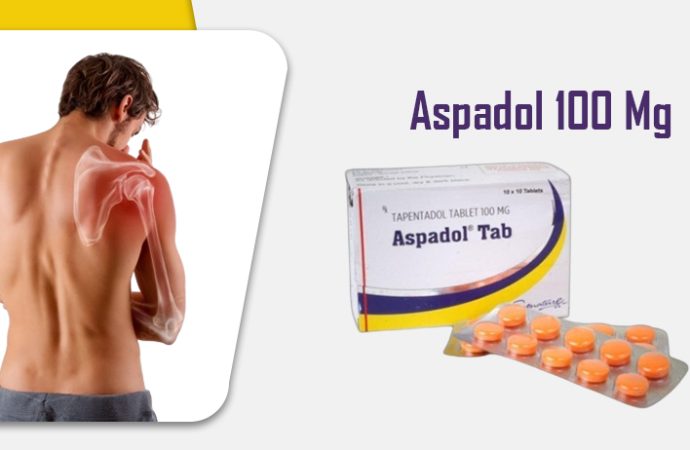Introduction Pain can stop you in your tracks. Whether it comes from an injury, surgery, or chronic condition, severe pain affects how you live, move, and feel. Aspadol tablet, especially Aspadol ER 150 mg, is a powerful option designed to help patients regain control of their lives. Backed by the potent action of Tapentadol, Aspadol
Introduction
Pain can stop you in your tracks. Whether it comes from an injury, surgery, or chronic condition, severe pain affects how you live, move, and feel. Aspadol tablet, especially Aspadol ER 150 mg, is a powerful option designed to help patients regain control of their lives. Backed by the potent action of Tapentadol, Aspadol provides strong relief so you can focus on what matters most—living your day with ease and confidence.
What Is Aspadol?
Aspadol is a prescription-strength pain reliever that works effectively to treat moderate to severe acute and chronic pain. It is available in several strengths, with Aspadol ER 150 mg being among the highest doses, offering sustained relief over an extended period. The active compound in this medication is Tapentadol, a dual-action agent that helps block pain signals while reducing pain perception in the brain.
This dual mechanism makes Aspadol a trusted solution for people who suffer from conditions that demand more than just a mild analgesic.
Understanding Tapentadol: The Core of Aspadol
Tapentadol combines two pain-fighting mechanisms:
-
Mu-opioid receptor agonist: This effect is similar to traditional opioids. It reduces the perception of pain by acting on opioid receptors in the brain and spinal cord.
-
Norepinephrine reuptake inhibitor (NRI): It increases norepinephrine levels in the brain, helping to modulate pain by affecting nerve signal transmission.
This unique combination allows Aspadol tablet to relieve pain efficiently while potentially causing fewer gastrointestinal side effects compared to other opioids like morphine or oxycodone.
Uses of Aspadol ER 150 mg
Doctors prescribe Aspadol ER 150 mg primarily for:
- Chronic lower back pain
- Post-surgical pain
- Severe musculoskeletal pain
- Osteoarthritis pain
- Neuropathic pain
- Cancer-related pain
Patients who have tried other medications without sufficient relief often turn to Aspadol ER 150 mg for its powerful, long-lasting effects.
Why Choose Aspadol Tablet?
People suffering from pain want more than just temporary relief. They want comfort, mobility, and the ability to live without fear of pain returning suddenly. Here’s why Aspadol stands out:
1. Extended Pain Control
Aspadol ER (Extended Release) formulations release Tapentadol gradually over 12 to 24 hours, ensuring continuous pain relief. This avoids the need for multiple doses during the day.
2. Strong but Tolerable
While strong enough for severe pain, Tapentadol’s dual mechanism often results in fewer digestive issues like nausea and constipation compared to other opioids.
3. Improved Quality of Life
Patients report better sleep, improved mood, and increased physical activity after switching to Aspadol tablet, especially the 150 mg ER version.
How Aspadol Works in the Body
Once taken orally, the Aspadol tablet dissolves and releases Tapentadol into the bloodstream. Tapentadol then travels to the central nervous system, where it interacts with opioid receptors and prevents the reabsorption of norepinephrine.
This two-pronged approach:
- Blocks pain signals at the source
- Reduces emotional response to pain
As a result, patients often experience a fast onset of pain relief with sustained results for hours.
Proper Dosage and Administration
Always follow your healthcare provider’s prescription when taking Aspadol ER 150 mg or any other strength. Never adjust your dose without medical advice.
General Guidelines:
-
Adults: The usual starting dose for chronic pain may begin with lower strengths, such as Aspadol 50 mg, and gradually increase to Aspadol ER 150 mg depending on individual tolerance and pain severity.
-
Administration: Swallow the tablet whole with water. Do not crush or chew extended-release tablets.
-
Frequency: Usually taken every 12 or 24 hours.
Your doctor will monitor your progress and adjust your dose to achieve the right balance between pain control and side effect management.
Who Should Not Use Aspadol?
Avoid using Aspadol if you:
- Have a history of severe asthma or breathing disorders
- Are allergic to Tapentadol
- Suffer from a blockage in your intestines or stomach
- Use MAO inhibitors (like selegiline or phenelzine)
- Are pregnant or breastfeeding without a doctor’s consent
Aspadol should not be used in children or individuals with uncontrolled mental health conditions without strict supervision.
Side Effects of Aspadol ER 150 mg
Like all medications, Aspadol tablet may cause some side effects. While most users tolerate it well, be aware of the following:
Common Side Effects:
- Dizziness
- Drowsiness
- Nausea
- Vomiting
- Dry mouth
- Constipation
Serious Side Effects (Seek immediate help):
- Slow or shallow breathing
- Severe drowsiness or confusion
- Fainting
- Seizures
- Hallucinations
- Signs of serotonin syndrome (e.g., rapid heart rate, agitation)
Inform your doctor if side effects persist or worsen. Never mix Aspadol with alcohol or sedatives without medical supervision, as this increases the risk of respiratory depression.
Managing Tolerance and Dependence
Because Tapentadol is an opioid, long-term use may lead to tolerance (needing higher doses) and physical dependence. That doesn’t mean it’s unsafe it just means it must be managed carefully.
Tips to Reduce Risk:
- Stick to your prescribed dose
- Avoid skipping or doubling doses
- Taper down gradually if you plan to stop
- Never share your medication
Doctors may rotate pain medications or recommend drug holidays (short breaks) to prevent dependency issues over time.
Aspadol Tablet vs. Other Pain Medications
How does Aspadol compare to other commonly prescribed painkillers?
| Medication | Type | Pros | Cons |
|---|---|---|---|
| Aspadol (Tapentadol) | Opioid + NRI | Dual mechanism, strong relief | Risk of dependency |
| Tramadol | Opioid + NRI/SSRI | Mild to moderate relief | Less effective for severe pain |
| Morphine | Pure opioid | Widely available, potent | More GI side effects |
| Oxycodone | Opioid | Strong relief | High risk of abuse |
| NSAIDs (Ibuprofen, etc.) | Anti-inflammatory | Good for inflammation-based pain | Not suitable for chronic severe pain |
Tips for Using Aspadol Safely
- Stay hydrated to reduce constipation
- Avoid driving or using heavy machinery until you know how it affects you
- Store securely away from children and pets
- Take with food if you experience nausea
- Keep a pain journal to track your symptoms and medication effectiveness
Patient Experiences With Aspadol
Many patients describe Aspadol ER 150 mg as life-changing. Here’s what some have shared:
- “I had severe spinal pain post-surgery. Nothing worked until my doctor switched me to Aspadol. I can sleep and work again.”
- “The extended release made a big difference. I don’t have to keep taking pills every few hours.”
- “Side effects were minimal, and my back pain is under control now. Grateful to have this medication.”
Conclusion: Restore Your Day With Aspadol Tablet
Pain shouldn’t dictate your life. Aspadol tablet, especially Aspadol ER 150 mg, gives you the strength to push back against chronic or acute pain and reclaim your daily routine. With Tapentadol at its core, it offers reliable, extended relief that targets pain in a smarter, dual-action way.
Aspadol tablet is a reliable choice for managing moderate to severe pain quickly. Its dual-action tapentadol formula means you can find relief at lower doses, helping you restore your day from work and family time to hobbies and social events. By following proper dosing, watching for side effects, and combining medication with healthy habits like hydration, diet, and gentle exercise, you maximize benefits and minimize risks. Always work with your healthcare provider to tailor your pain management plan. With the right approach, Aspadol can help you feel relief and regain control of your daily life.
Frequently Asked Questions
1. Is Aspadol addictive?
Yes, it has potential for addiction, especially with misuse. Always use it under medical supervision.
2. Can I take Aspadol with other medications?
That depends. Avoid combining it with other CNS depressants unless approved by your doctor.
3. How quickly does Aspadol work?
Immediate-release versions act within 30–60 minutes. ER tablets may take longer but offer sustained effects.
4. Can I stop taking Aspadol suddenly?
No. Doing so may cause withdrawal symptoms. Always taper off gradually under medical advice.
5. Is Aspadol the same as Tramadol?
Not exactly. While both act on opioid receptors and inhibit norepinephrine reuptake, Tapentadol (Aspadol) is stronger and has a different side effect profile.
















